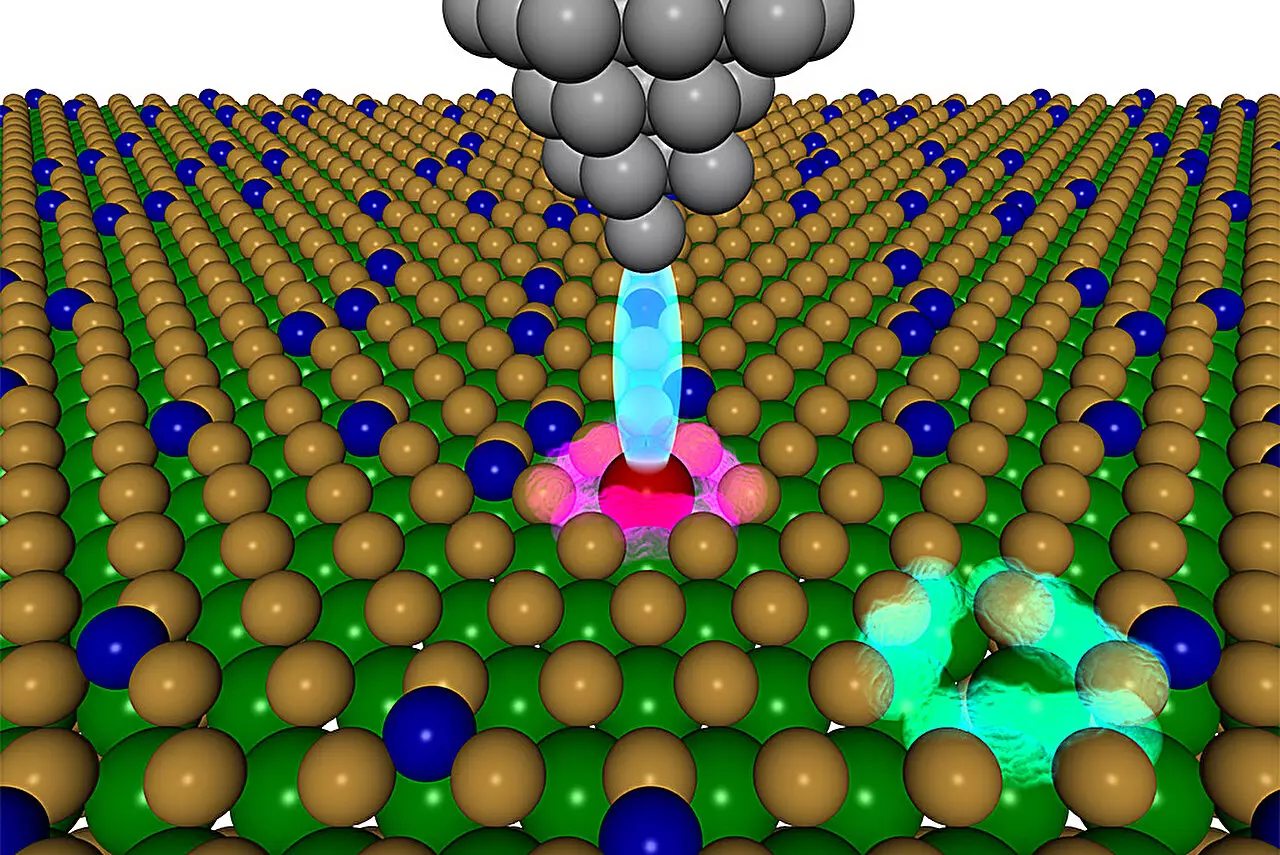The vast landscape of quantum research is undergoing a transformative change, facilitated by innovative methodologies that manipulate material properties at an atomic level. Researchers at the Lawrence Berkeley National Laboratory, alongside collaborators from esteemed institutions such as Dartmouth College and Penn State, recently showcased a trailblazing approach for discovering materials suitable for quantum applications. Their findings, published in the journal *Nature Communications*, outline a method that combines rapid computational prediction with precision fabrication techniques, effectively accelerating the journey from theoretical models to practical applications.
Traditionally, the identification of functional quantum materials—a critical asset for advancements in computing, telecommunications, and sensors—has followed a slow and painstaking route. The earlier approach relied heavily on empirical experimentation to identify defects in materials one at a time. This method, fraught with inefficiencies, often resembled searching for a needle in a haystack; researchers fumbling through countless possibilities to eventually discover a promising defect by sheer happenstance. However, thanks to remarkable developments in high-throughput computational techniques, we stand on the brink of a new era, one that allows researchers to leverage theoretical insights to pinpoint potential candidates efficiently.
The Power of Theoretical Screening
At the core of this groundbreaking research is a highly advanced theoretical screening process that predicts the properties of over 750 defects in two-dimensional materials like tungsten disulfide (WS2). Notably, the methodology harnesses state-of-the-art quantum mechanical computations and high-performance computing resources from the National Energy Research Scientific Computing Center. By doing so, the research team was able to refine the search for defects that possess optimal qualities—stability, electronic structure, and efficient light absorption—streamlining the selection process from an overwhelming multitude of potential candidates to a manageable shortlist.
A breakthrough, the study identified a defect formed by substituting a sulfur atom in WS2 with a cobalt atom, which had not been known to exhibit such advantageous quantum properties prior to this investigation. This finding marks a significant milestone in the quest for stable and functional quantum materials, paving the way for further exploration and application.
A Leap from Theory to Experimentation
What sets this study apart is the seamless integration of theory with experimental practices. The researchers, notably led by Geoffroy Hautier, adopted a novel approach: using theoretical computation as a guiding framework to select only the most promising candidates for laboratory experimentation. This shift not only demonstrates the efficacy of computational predictions but also reflects a collaborative effort involving both theorists and experimentalists who provided mutual feedback throughout the process, ensuring that the methodologies were optimally aligned.
Such collaboration is essential, as it enhances the reliability of the experimental outcomes. Previous methodologies lacked this symbiotic relationship, resulting in isolated studies that often failed to leverage the full spectrum of expertise available within research teams. The implications of this are enormous: by actively engaging both theoretical and experimental branches of research, the team has established a more holistic and efficient workflow that could potentially reshape the future of material science.
Advancing Quantum Applications with Precision Fabrication
Following the theoretical identification of the cobalt defect, the researchers embarked on the task of fabricating this defect with a level of precision that has historically evaded scientists. They employed advanced techniques at Berkeley Lab’s Molecular Foundry, specifically engineered for atomic-level control. This level of precision is critical; the ordered arrangement of atoms can directly influence the material’s electronic characteristics, which in turn affects its viability for quantum applications.
The innovative technique employed involved creating controlled defects in WS2 by selectively utilizing argon ions to etch away sulfur atoms, thereby creating reception points for cobalt atoms. This approach not only allows for the meticulous placement of atoms but also facilitates the reproducibility of defects—crucial for achieving entangled states necessary for effective quantum communications.
Furthermore, enlightening comparisons between computational predictions and experimental results reaffirmed the synergy between the computational and experimental branches. It illustrated not only the reliability of theoretical models but also the boundless potential that computational advancements hold for real-world applications.
The Broader Implications for Quantum Science
Candidates for optimal quantum materials do not merely present an academic interest; they hold the promise of revolutionizing many aspects of technology. From enabling faster computing to refining long-distance telecommunications through enhanced sensory capabilities, the impact of discovering high-functioning quantum defects is profound. The collaborative effort that birthed the Quantum Defect Genome database stands as a testament to the aspirations of this research. This platform, intended to grow with contributions from the global research community, aims to compile and share defect data widely.
In light of these developments, the future of quantum materials discovery appears brighter than ever. While many challenges remain—such as the need to stabilize quantum states against environmental disturbances—the integration of theoretical foundations with precision experimentation offers a compelling pathway to overcoming obstacles previously deemed insurmountable. The collective wisdom and vision shared among scientists in this field may well endow us with materials not yet conceived, ultimately transforming our understanding and utilization of quantum information science.


Leave a Reply